Techniques Used
Ecological studies require assessment of the conditions pertaining to the life and environment of growth of plants and animals, both past and present. To this end, the SIL utilises O, C, H, N, Sr and Pb isotope systems, together with C/N ratios on a variety of organic materials which record the history of living organisms.
Example Applications
Life History of Fish from the Laurentian Great Lakes
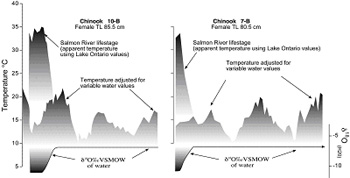 |
Otoliths from modern fish in the Laurentian Great Lakes were analyzed to provide life history information that has yielded new insight into behavior of various species of a single genus. Importantly, several of the species studied, though recently extinct, have yielded details of their lives unobtainable by any other means. Otolith isotope data from chinook females provide details of temperatures experienced throughout life. |
Dietary History of Antarctic Penguins
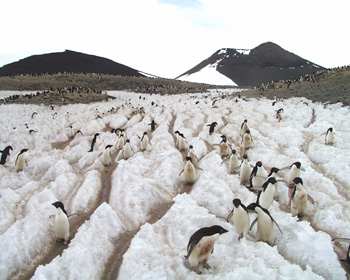 |
|
| For further information, contact Bill Patterson | 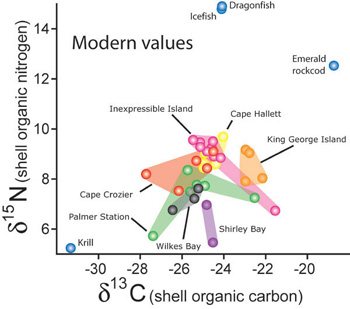 |
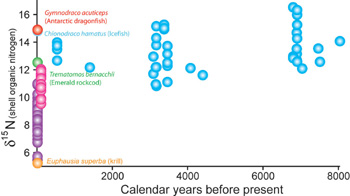 |
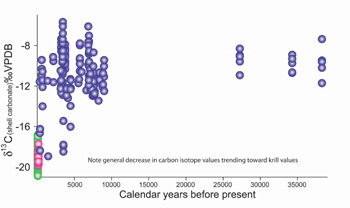 |
Fish Which Eat Wood
| Research in South America continues with Dr. Jay Nelson and Hirofumi Nonogaki on the ecology of wood eating catfish. These fish represent the only vertebrates that can thrive on a diet of wood cellulose. Aided by enteric bacteria these armored catfish have a unique diet that we have studied using stable isotope values of otoliths. For further information, contact Bill Patterson |
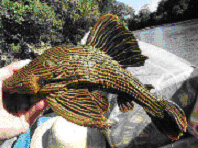 |
Tracing Ivory to its Source
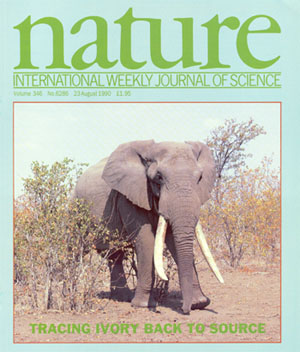 |
 Studies of elephant ivory and bone have shown that these can be distinguished with respect to underlying bedrock, vegetation and climate. The Sr (and Pb) isotope composition of local bedrock is transferred through vegetation to an elephant's tusks whilst different climatic and environmental conditions influence nitrogen, oxygen and carbon isotope compositions. For further information, contact Bruce Eglington |


